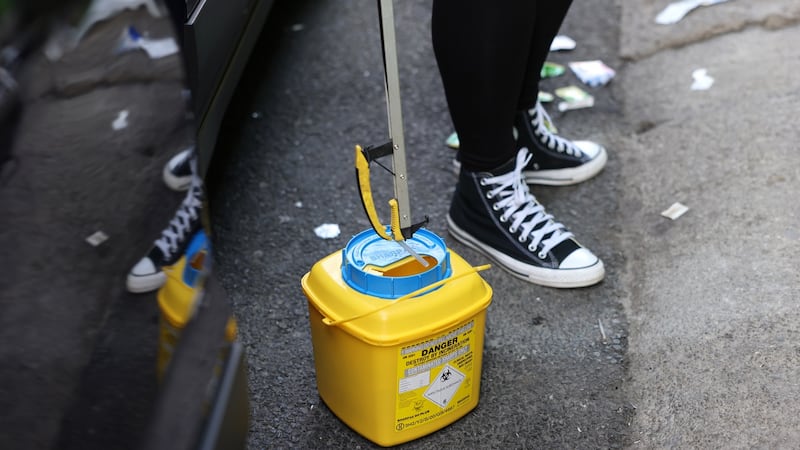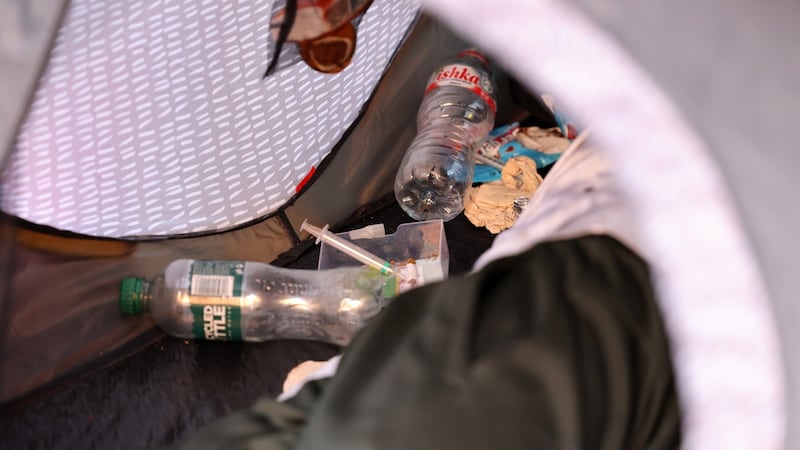The development of a facility where intravenous drugs could be consumed under medical supervision would “get injecting out of the public eye” and lessen the risk of people dying from overdoses, Dublin drug users say.
Some of those who spoke to The Irish Times said they felt "horrible" about having to inject on the streets and that doing so is "dangerous" for the wider public. An estimated 400 people per month are injecting heroin on Dublin streets, according to the Ana Liffey drug treatment centre.
The filthy and unsafe conditions of public injecting were evident across Dublin city centre over the course of two mornings in the week after planning permission for the first medically supervised injection facility (MSIF) was set aside by the High Court.
The planned centre, which would have been opened by Merchants Quay Ireland at its Riverbank Centre premises in Dublin 8, had failed to properly engage with objections from a nearby national school, Mr Justice Garrett Simons ruled, as he remitted the decision for “reconsideration”.

Shortly after 7.30am on Loftus Lane, behind Cineworld on Parnell Street, three young men in two open tents appear barely conscious. A used syringe lies on the floor of one tent. Scattered around outside are 21 used syringes and needles, along with bloody swabs, citric acid wrappers (used to break down heroin) and sterile wipes. Should any of the men overdose, it is likely they would lay undiscovered here for several hours.
Detritus
Across the Liffey, at Bedford Lane, a narrow alley off the quays, the detritus of injecting – needles, disposable cooking pots provided by needle exchanges, syringe barrels, filters and swabs – lie amid rubbish and human faeces. The scene is repeated at numerous locations.
Just after 9am, in three tents at the corner of St Stephen's Green opposite the Shelbourne Hotel, there are four men. One is lying down, suffering from heroin withdrawals.
Jay (26), a former intravenous user, who is with him, says he has lost “about 10” friends to drug overdoses in the past decade.
“I smoke the brown – heroin,” he says. “I don’t use but I know plenty of people who need a safe place to use. If you go down an alley and use, and OD (overdose), in five minutes you can pass away and no one sees you. By the time it comes to half an hour and someone sees you, it’s too late.
“Some don’t clean up their needles, are leaving them around for children to find. That’s dangerous. They need a place where they can use safely and dispose of their shit after. If there was an injection room, yeah, 100 per cent, it would be a lot safer.”
Over the past year, Dublin Fire Brigade paramedics attended 1,089 drug-related incidents in the city centre, according to figures provided to The Irish Times – with 109 of these happening last month.
Just after 11am, on Ormond Lane off Ormond Quay, a woman aged 26 but looking far younger, leans over and pulls her black leggings down to expose her groin, into which she injects. As she does so, a woman in a pretty blue summer dress walks through the lane, which is yards from a playground at Ormond Square.
Health issues
Groin-injecting, favoured among users who have to inject in public due to the speed with which the drug can be administered, is associated with a range of serious health issues, says Tony Duffin, chief executive of the Ana Liffey drug treatment centre. These include deep vein thrombosis, leg ulcers and damage to the lower venous system.
An outreach worker, who knows the woman, says she is “really worried she will lose one of her legs”.
Also on Ormond Lane is wheelchair-bound Stephen Allen (34), from Limerick. He had a leg amputated when an "abscess blew up" after he injected two years ago. He was in a squat with other users at the time.

“My mate rang an ambulance and I was taken to hospital. Septicemia was running through me. I woke up with one leg gone. I was in hospital for a year and I’m waiting on a prosthesis.”
Asked about an injecting facility, he says: “It would make the place a lot cleaner.”
Dublin City Council’s waste management staff “routinely collect and remove needles” throughout the day from 6am, said a spokeswoman.
“The city centre area in particular is especially prone to discarded needles as it contains multiple areas and opportunities such as laneways for drug users to inject. Staff receive training for the task and all our vehicles now carry sharps boxes for disposing collected needles.”
Unseen needles
She said hidden or unseen needles, especially in litter-bins, posed the greatest risk to staff and the public.
Eamon (48), begging on Lower Liffey Street at around 11.30am, says he injects about four times a day “in laneways, parks”.
“Yeah, people are passing all the time. It’s disgusting, for me, for them,” he says.
Asked about concerns, raised by opponents of a city-centre injecting facility, that it would attract more users to the area, he says: “A centre is not going to make more people use. If you’re going to take drugs you’re going to take drugs. But it would get it out of the public eye.
“And there are a lot of young girls using now. It would especially be safer for them. Yeah, it’s badly needed.”










